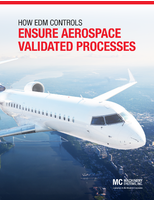Packing Sliced Cheese at High Speeds; How SEALPAC and Arla Became the Perfect Combination
Share:

Whether it concerns large cheese blocks for the catering industry or small packs with sliced cheese for consumers, Arla's cheese products are renowned in Scandinavia and other parts of Europe. In its production facility in Götene (Sweden), Arla packs sliced cheese on a fully automatic production line with a SEALPAC RE25 thermoformer at its centrepiece. We spoke with Torbjörn Wiechert, project leader at Arla, who designed and implemented this high capacity line together with SEALPAC and its Swedish distributor JS Teknik. About the challenge of serving every interest in a company, and about how Arla and SEALPAC became the perfect match.
Dominating the cheese market
With almost 16,000 employees and production facilities in no less than 12 countries, Arla (www.arla.com) can be regarded as a leader in the production of milk-based products, among which cheeses. Arla is owned by the farmers that supply the crucial element to all its products: natural milk. One of the company's strengths is that it provides food products under conditions where the entire value chain from cow to consumer is controlled.
In Sweden and Denmark, Arla dominates the cheese market with a share of over 50%. But also outside these home markets, Arla is distributed as a top brand in different countries. In Finland, for example Arla supplies cheese products under the EVA brand, name, whilst in Germany Arla's products can be found at major supermarkets such as Aldi and Lidl.
The trend towards sliced cheese
Arla's marketing department is constantly monitoring the changing demands of consumers. On regular occasions, discussions are initiated with the dairies to determine important trends. Torbjörn Wiechert, project leader at Arla: 'This has in fact lead to our current package for sliced cheese that we pack on a SEALPAC RE25 thermoformer, which we bought in 2008.'
Arla has seen a consistent growth in the demand for sliced cheese in the past years. This is fairly new in Scandinavia, where people are used to buying cheese blocks which they slice at home themselves. During the summer period, when people are more sensitive to convenience products, Arla already saw a rise in the sales of sliced cheese. And after each summer, a certain percentage of these consumers would not go back to cheese blocks. Wiechert: 'By 2008, we were running our complete production on a single machine at three shifts a day, seven days a week. Clearly we were facing a shortfall in capacity. As such, we started to look for a new packaging machine with a significantly higher capacity than the existing one.'
Dealing with different interests
Torbjörn Wiechert started working in Arla's milk powder factory in 1997. Approximately five years ago, Arla opened a new building in Götene, on the eastern bank of Sweden's biggest lake Vänern, where various processing and packaging lines were going to be installed for butter and cheese. It was at this time, that Wiechert took up the position as project leader within Arla. As a project leader, he heads a team of different disciplines within the company, in order to reach the best possible solution for a new packaging line. With diverse disciplines such as Marketing, Production, Quality, Maintenance and Technical Service, each with their own interests, this is not an easy job. Not to mention the project sponsors looking over his shoulders with regard to costs.
Wiechert about the buying process: 'By the end of 2007, we started up a project team with regard to the packaging line for sliced cheese. Soon, we were facing a list of demands such as high capacity, low residual oxygen levels, hermetically sealed packs with easy opening and the possibility to reclose, low maintenance, and optimal hygiene. In the end, SEALPAC and JS Teknik, SEALPAC's distributor for thermoformers in Sweden, made it possible to fulfil almost every one of these demands.'
When comparing the three alternatives that were offered, Arla found limited differences in technology and price level. Its production department was a little bit afraid to change to a different brand of machine, but in the end it was Johnny Andersson of JS Teknik who convinced them. His active role as an advisor in setting up the complete line turned Arla to the SEALPAC thermoformer. And being locally present in Sweden, Johnny proved to be a vital contact for them.
Setting up the line
When designing and implementing the packaging line, listening to the operators proved crucial. As Arla's production space is relatively narrow, it was important to have quick exchange systems for the film roles which required little room for movement. Also, with both 2 meters tall men and 1.5 meters short ladies operating the line, the exchange had to be light. Especially for the jumbo bottom film this was a challenge, but it was fixed. Even the working height of the line was adjusted to the operators' wishes.
Keeping the line running at all times was probably the most important demand. Due to the quick exchange systems and a low demand for maintenance, the machine hardly stops during the day. Wiechert: 'Arla Götene currently has four production lines with SEALPAC thermoformers, including a brand new RE30 tandem thermoformer which packs triangular cheese blocks at high speeds. All these lines run continuously and have very little downtime. What more could we wish for?'
The line for the sliced cheese pack consists of various slicing, coding, weighing, labelling and metal detection systems, which needed to be in perfect synchronization. SEALPAC's RE25 thermoformer makes it look easy, but it took some fine-tuning to achieve the optimum result. JS Teknik played a significant part in this process by coordinating the various co-suppliers. They also supplied the labelling systems, which were already built and tested on the thermoformer when it had its factory acceptance test. Wiechert: 'Now, we are able to produce at over 10 cycles per minute, and it is impressive to see 120 packs leaving the integrated inline-unit on the thermoformer every 60 seconds. SEALPAC even extended the loading area, so that the operators can keep up to speed with the machine. But more important, we now have a fully automatic line where the operators are mainly watching over the machine.'
Ultimate convenience in a cheese pack
The two packs (150 and 300 grams) that are produced on the SEALPAC RE25 have some interesting features. For easy opening, part of one corner of the bottom film is cut from below in order to make it easier to lift the top film after the pack has been sealed. You may recognize this opening principle from the small cups with coffee milk.
Also, the packs have a re-sealable top film for optimal convenience. Remaining cheese slices can simply be put back in the refrigerator, whilst maintaining their freshness. The bottom of the pack has small grooves, which make it easier to take the last slice of cheese from the pack. Its specific design allows for the pack to be presented vertically, which is common in Scandinavia.
Future trends to watch
According to Arla, an important trend in Sweden is the demand for 'home-made' products. Cheese packs should look as if they were sliced and hand-packed at the supermarket. It is for this reason, that Arla seals different cheese products with a 'paper-look' top film.
Obviously, environmental issues are an important topic for Arla. However, the difficulty is to find packaging materials that are truly 100% recyclable. Paper would be an option, but the moisture inside the cheese makes it difficult to achieve a reasonable shelf-life. And with a special layer still needed for sealing, it would not be a complete solution. But Arla will keep looking into other innovative solutions, such as 'sealing' by means of Velcro.
Doing as promised
Wiechert: 'Looking back at the project, both SEALPAC and JS Teknik have done what they promised in each step of the buying process. And we always got an answer to our questions. We made several visits to SEALPAC's factory in Emmen (NL) to discuss the possibilities of the thermoformer, as well as to find the perfect setup of the packaging line. It was clear that we were not buying a standard machine, but one that was configured to our needs.
SEALPAC technicians visited our factory in Götene to test the residual oxygen level inside the pack. They were able to bring it down below 0.5%, which fitted our expectations. With a sensitive product such as cheese, it was also important to have a vacuum/gas system that would have very little impact on the structure of the cheese. SEALPAC and JS Teknik made it happen. Right now, we are able to pack our sliced cheese safely under modified atmosphere with a mix of 40% CO2 and 60% N2, resulting in a shelf-life of up to 70 days!'
Wiechert concludes: 'I am proud of the sliced cheese packaging line with the SEALPAC RE25 thermoformer, because I know I can rely on it and sleep safe at night. Just like I can rely on JS Teknik for advice and after sales service.'




